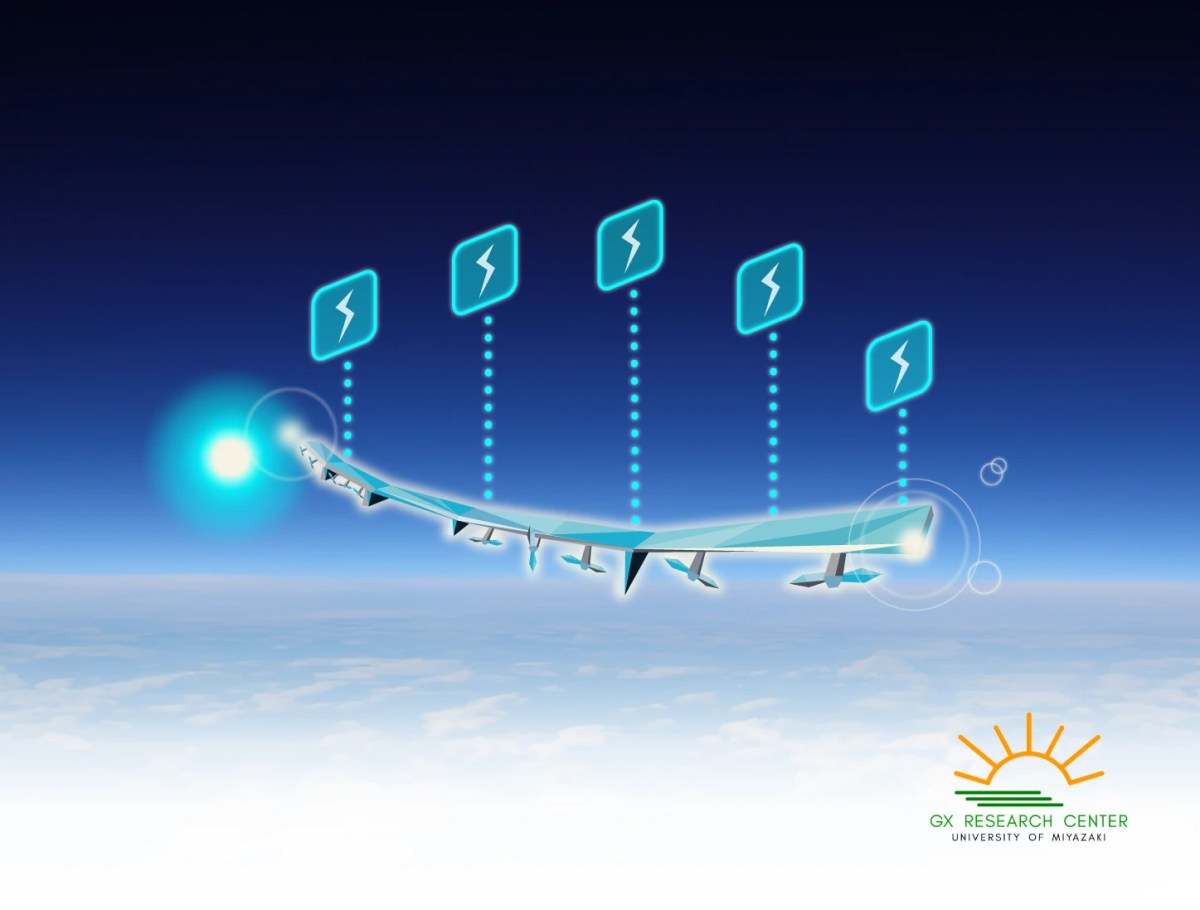Importance of HAPS Power Generation Simulation
(For an explanation of HAPS energy balance, click here)
To keep a solar-powered HAPS flying continuously, its power generation must exceed its consumption. While predicting the power consumption of the motors is straightforward, predicting the power generation of solar cells is complex. The sun constantly changes its angle, the installation angles of the solar cells on the aircraft surface vary, and the entire HAPS performs a three-axis rotation (yaw, roll, and pitch). If the predictions are inaccurate and energy runs short, it becomes difficult to maintain service and the altitude of the aircraft, posing significant risks. Therefore, improving the accuracy of power generation simulations is crucial.SoftBank is developing a HAPS power generation simulation model in collaboration with Professor Nishioka’s laboratory at Miyazaki University, a national university corporation. This simulation model combines Miyazaki University’s expertise in ground-based mobile simulation models with SoftBank’s knowledge of the stratospheric environment and aircraft. It replicates the yaw, roll, and pitch movements of the aircraft and accurately predicts solar radiation using a 3D mesh that considers the scattering of sunlight and the effects of self-shadowing. This allows for precise calculation of insolation and energy balance during HAPS flights.
Stratospheric Light Source Model
The actual data shows that the solar spectrum at an altitude of 18-24 km, where HAPS flies, generally matches the Air Mass 0 (AM0) in space. However, this only holds true during times when the sun is at a high altitude; significant discrepancies arise when the sun is at a lower altitude. To address this, we have developed a light source model that can simulate the stratospheric environment on a computer, correcting for atmospheric scattering and absorption spectra.This model allows us to calculate the solar spectrum and insolation for any given latitude, longitude, altitude, and time. Using this model to replicate an altitude of 20 km, we found that the direct and scattered components of light differ from AM0 (1366W/㎡) by only 1-2%, which is within the measurement error of the sensors during high solar altitude times. Although parameter adjustments were challenging due to stratosphere-specific phenomena during low solar altitude periods, we successfully developed a light source model that closely aligns with actual measurements across all latitudes, longitudes, altitudes, and times.
3D Mesh Modeling
Based on the size of the solar cell modules on the aircraft, we automatically allocate one mesh per module and calculate the power generation for each mesh. The upper surface of the HAPS wing is saddle-shaped, and complex self-shading occurs, especially during low solar altitude times. It is necessary to preemptively account for cosine losses and the presence of self-shading from light rays in all directions. This model has been designed to accommodate various HAPS airframe shapes, including tailless, single-wing, tandem-wing, balloons, and airships.
Development and Optimization of Algorithms
To accurately reproduce the power generation of solar cells during HAPS flights, we developed algorithms using tensors, matrices, and vectors in 3D space. These algorithms account for atmospheric pressure, air parameters, and reflections from the ground and clouds, automatically linking the solar irradiance model with the solar cell modules on the wing surface. We also successfully modeled the dynamic deformation of the wings. With these algorithms, we can efficiently calculate the insolation received by HAPS solar cells and improve the accuracy of the energy balance during operations.
Simulation Results
The following graph shows the cumulative power generation of the solar cells on the HAPS wing surface under certain conditions. For solar cells installed flat on the ground, the cosine losses are the same regardless of the direction relative to the solar altitude, resulting in concentric contour lines. However, on the HAPS wing surface, when the solar altitude falls below 20 degrees (approximately three hours after sunrise and three hours before sunset), these concentric lines are disrupted.
In the daily insolation distribution, the changes in the aircraft’s yaw, roll, and pitch affect the output trends. We analyzed the insolation characteristics at specific points (A, B, C, D) on the wing when the aircraft rotated 360 degrees in the yaw direction immediately after sunrise. As a result, the decrease in power generation due to self-shading created by the saddle-shaped surface was also reproduced.
Summary and Future Prospects
HAPS is expected to be applied in various fields, including communication, observation, and disaster response. To realize these applications, accurate predictions of the energy balance in the target flight area are essential.The SoftBank research team plans to further improve accuracy by fine-tuning parameters, simulating all processes from takeoff to landing, and analyzing and modeling the transient aspects of degradation during long-term operation. We will continue to focus on developing technology to provide stable high-altitude communication services.
Writer:Kohei Okada

